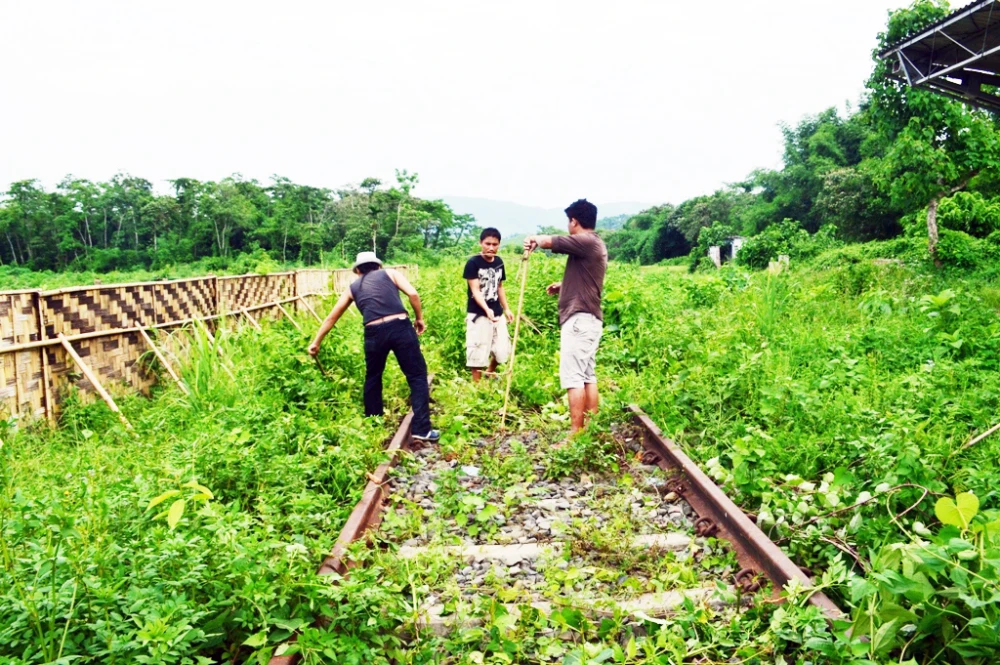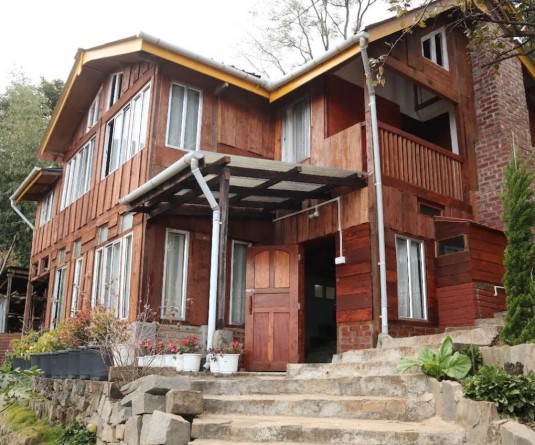The abandoned and run down platform at the Tuli train Station. (Morung Photo)

Longrangty Longchar
Tuli | June 21
Many may not have seen or heard about it, but beneath the lush undergrowth of plants lies a rail track in Tuli town, just a few kilometers from the Nagaland Pulp and Paper Corporation.
In fact, it is a mini-station. And looking at the concrete buildings, the toilets, wash basins, perhaps the government had big plans for this rail station. But today it remains in a dilapidated condition. The word ‘Station Master’ is barely visible on the building wall.
The toilets are overgrown with plants, the rail head rusted and all that one could conclude after looking at the present condition is the phrase ‘What a waste!’ The information about the Tuli Rail Station is sketchy. While some surmise that it was meant for transporting finished products from the Tuli Paper mill, which died down after the paper mill went defunct, most don’t know that it really existed. But today, many opine that the train station should be revamped because it could turn out to be one of the most important rail stations in Nagaland.
“You see, Tuli is located in a strategic place. It can easily connect with Mon, Longleng, Tuensang and Zunheboto. If we have a functioning Train Station, then why should we depend on Assam for importing our essential commodities,” commented Bendang Chingmira, a government teacher who visited the rail station.

‘It’s a shame that we let it to degrade. The Railway ministry must have spent a lot of money here, we could have gained so much from this station,” said Jendi, who is also a government teacher. While the exact cause for the failure of the Tuli Train station cannot be ascertained as of now, yet the importance of this station is being urgently felt that even the Mokokchung Chamber of Commerce and Industries (MCCI) has written to the Chief Minister for its upgradation.
The MCCI, on May 31, apprised the Chief Minister through a memorandum that ‘turning the existing railhead at Tuli into a full-fledged railway station would unleash an era of unprecedented economic development in Nagaland’.
Local entrepreneur Tsukti Longkumer also opined that the eastern and northern part of Nagaland cannot depend and survive on Dimapur market alone. Unless the Train Station at Tuli is made operational, the eastern and northern part of Nagaland would have to trade with Upper Assam and be at the mercy of Assam based organizations during bandhs, he added.
A youth from Mokokchung, Arsashi Ozukum expressed optimism that the Tuli Train Station will become operational once the Tuli paper mill is revamped, since the industry will need a train to transport the finished products. But that dream is still a distant one as the revamping of the paper mill remains in its initial stage. Rusted machineries and cobwebs inside the Paper Mill clearly indicate that the mill is in a pathetic condition and will take time to become fully operational.
For now, those who happen to visit the Tuli Train Station can simply sigh at the how the eastern and northern part of Nagaland might have benefited, if the mill was operational.






